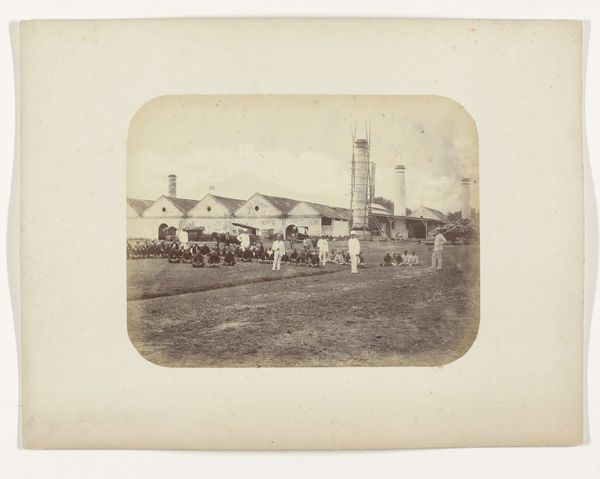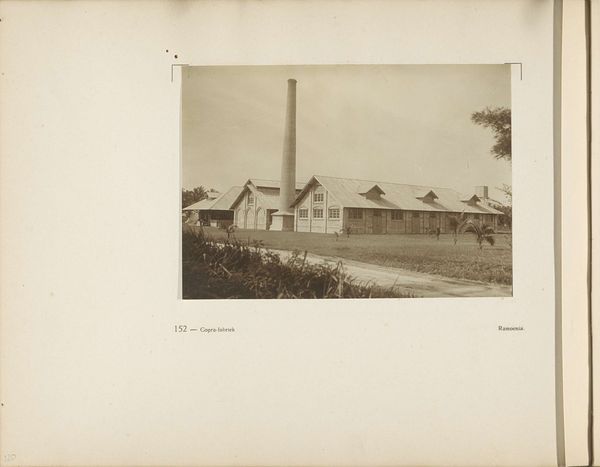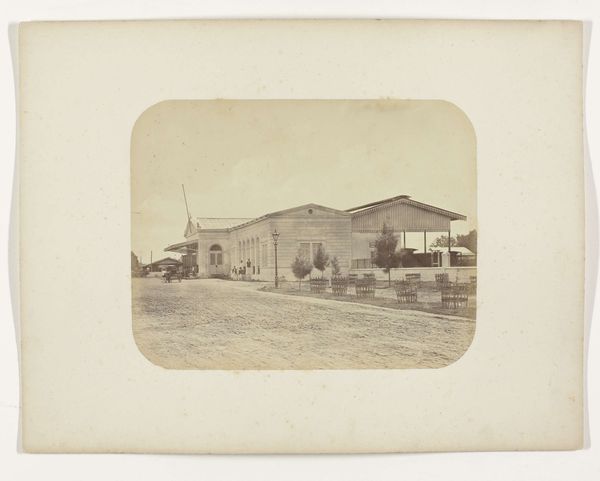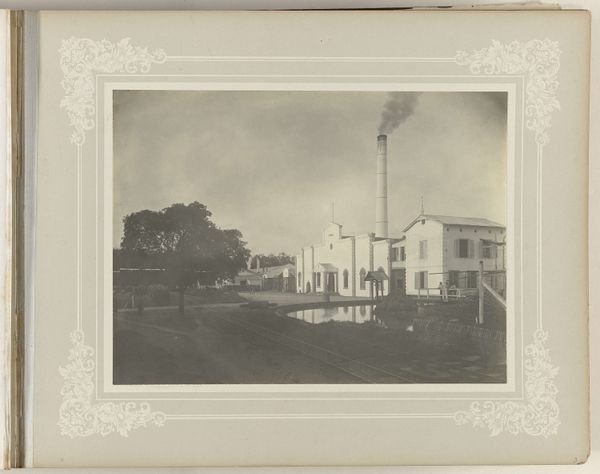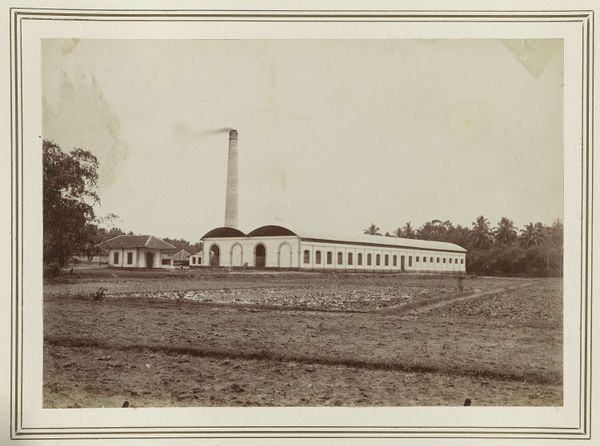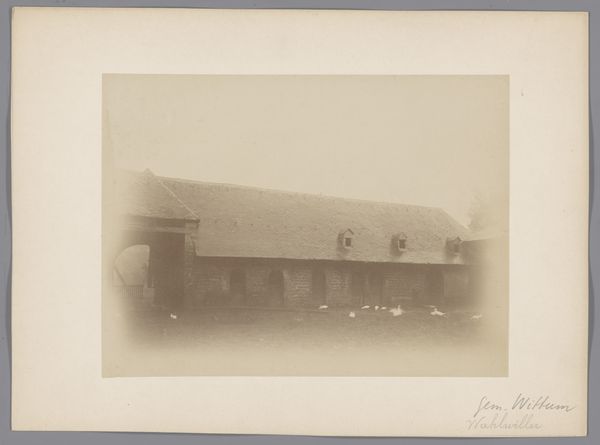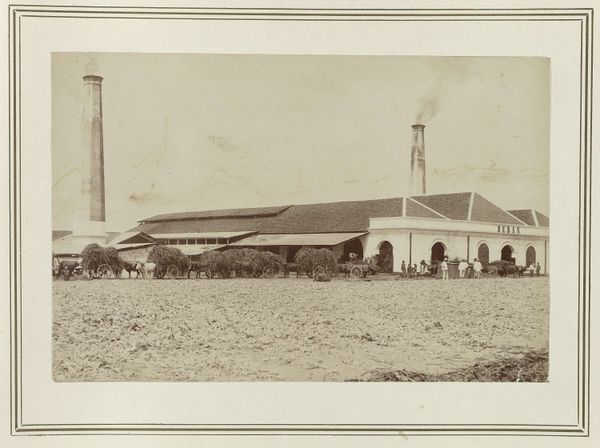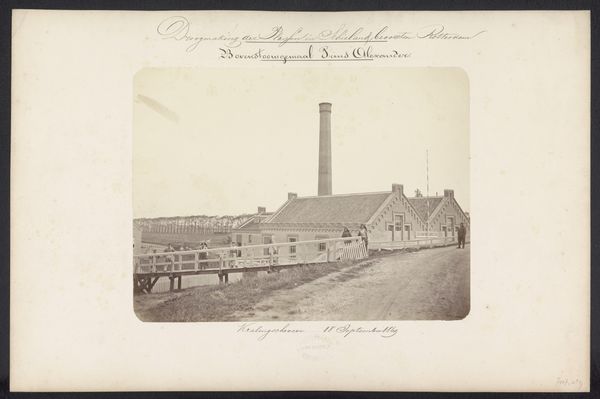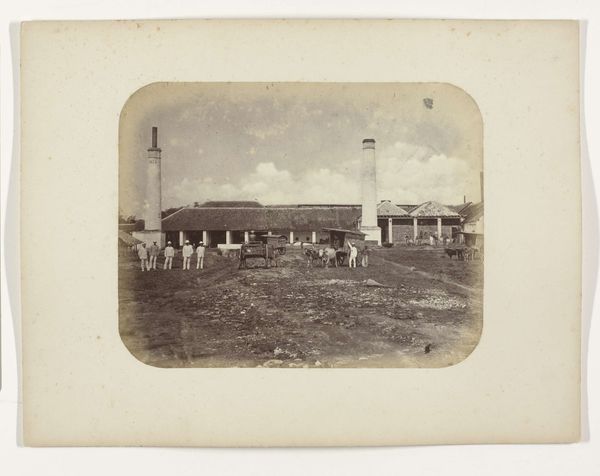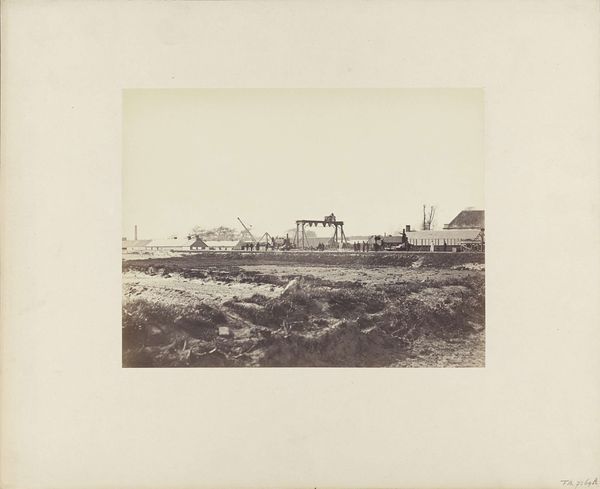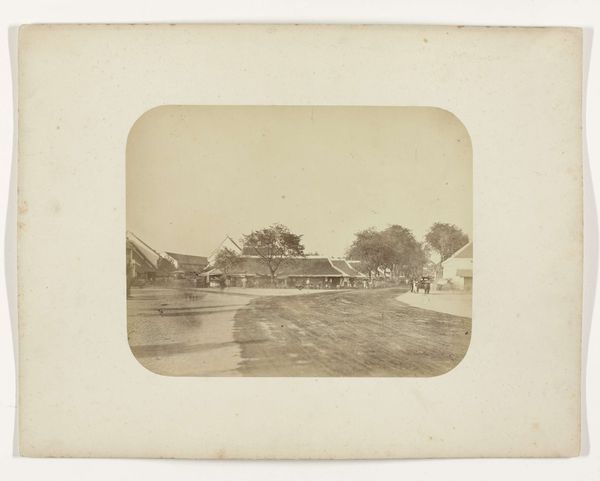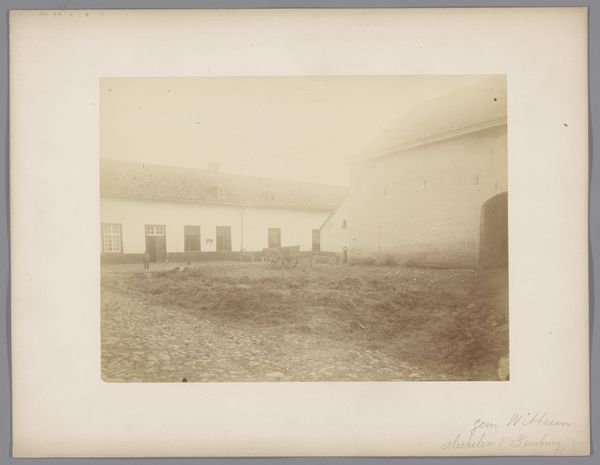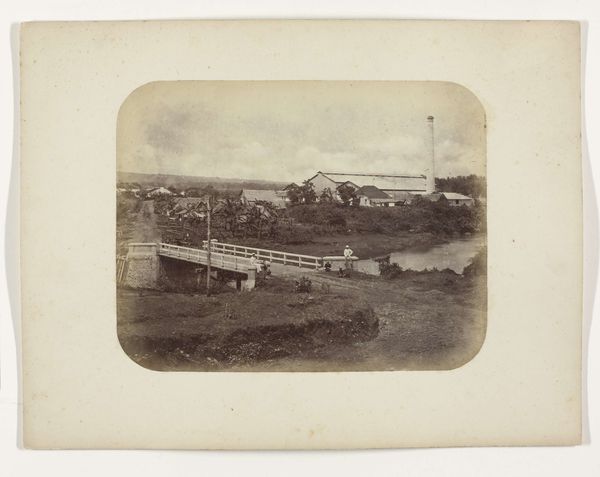
photography, gelatin-silver-print
#
16_19th-century
#
landscape
#
photography
#
coloured pencil
#
gelatin-silver-print
#
cityscape
#
realism
Dimensions: height 22.6 cm, width 29.1 cm
Copyright: Rijks Museum: Open Domain
Curator: Looking at this gelatin-silver print, there's a certain quiet stillness that contrasts starkly with the image itself. Editor: You're right. What is depicted? Curator: It's a photograph entitled "Suikerfabriek Seloredjo," dating from the period between 1876 and 1884, and attributed to Herman Salzwedel. What initially strikes you? Editor: That massive chimney and stark building dominating the landscape. There's something undeniably oppressive about the architectural imposition of this sugar factory on the land, this particular image is currently held at the Rijksmuseum. The photograph raises questions about colonialism, labor exploitation, and the environmental impact of industrial agriculture, even then. It would be so impactful to look at the historical and societal aspects here. Curator: Absolutely, and what is more striking, too, is the material contrast itself: the detailed rendering made possible by the gelatin-silver process highlights the factory's imposing facade, while also allowing the rough, uncultivated ground in the foreground to show. The carriages parked outside suggest a degree of capitalist commerce, consumption and industry are at play here. Editor: Indeed, we should investigate further! Consider the lives impacted by this factory—the plantation workers, the local communities, all whose stories are linked to its creation and operation. The architecture almost normalizes these structures in the environment too, which then translates to society. What materials and resources were exploited? What forms of resistance arose? Curator: Those are critical questions. And artistically speaking, I can see what appears to be hand-coloring using colored pencil too. The image almost attempts to soften the industrial elements using natural ones in art, an approach highlighting photography and art, even realism! Editor: Perhaps it was made for promotional reasons at the time, to create some "aesthetic marketing"? We would have to look at context. It still serves as a document, for example, illustrating both colonial infrastructure and environmental changes. I see both destruction, as well as construction here, quite poignant! Curator: So true. And through understanding its construction and viewing what exists on the plane itself, we might also come closer to understanding the society which it existed in. Editor: Definitely. Hopefully, this brings more awareness to similar sites as well.
Comments
No comments
Be the first to comment and join the conversation on the ultimate creative platform.
